A plea for a renewed understanding of artist studios as ‘social real estate’, and for forms of ownership and governance that underpin this understanding.
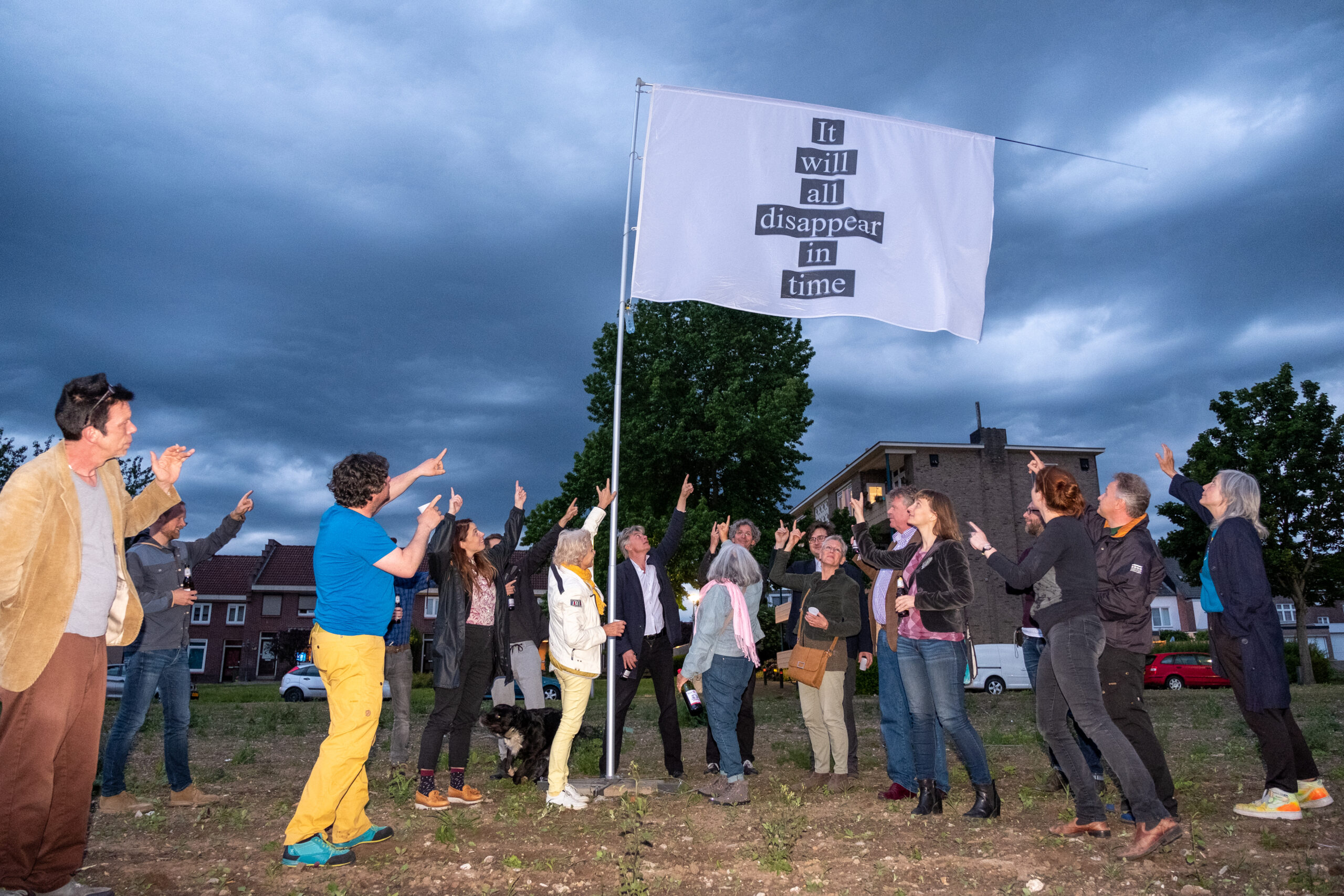
A summer evening in 2019. The Caberg neighborhood in Maastricht. A vacant lot with a flag planted in it. It reads: ‘It will all disappear in time.’ The flag is an artwork by Wouter Huis, here photographed by Tetsuro Miyazaki. A small group of people stands pointing powerfully at the defeatist, or if you will, resigned message that eventually everything will disappear. And that will indeed happen. In fact, everything has already disappeared. Until a few months before this summer evening, there were still 119 single-family homes from the early ‘50s on this now-vacant lot. Starting in 2017, the housing corporation Servatius demolished these houses to enable new construction.
Given that the whole process from moving tenants out to demolition is a long one, the vacant houses were temporarily given to artists. They kept the neighborhood alive, painted the houses in different colors, and organized open studios. There was even a Caberg Biennial in 2015, in the knowledge that there would never be another edition. In the public working group discussion that Platform BK and the Kunstenbond (Artists’ Union) organized that evening, artists stated that their artistic practice would have benefited more from affordable housing in Caberg than the possibilities that local cultural policy offers individual artists.
The conversation in Maastricht was one of the six public working groups of Geen Stad Zonder Kunst (No City Without Art) #2. There are different issues at play in each city, but the similarities are significant: everywhere, studios are growing more expensive and scarcer, and rental contracts more temporary. Municipalities are selling studio buildings. Housing corporations are selling off housing with built-in studios or shifting them over to the open market for wealthier, non-artist renters. And the initiatives that emerge to preserve studio buildings have to lobby for years and fight for a piece of the city the size of a postage stamp.
The six working groups with civil servants, aldermen, politicians, artists, studio organizations, and other stakeholders resulted in many insights and lots of information. The housing corporations mostly have good intentions, but it’s the finance depart that gets to decide. Often, there’s good will at the municipal department of culture, but the department of real estate makes the decisions. The studio organizations do what they can, but they can’t match the bids of real estate speculators. Artists consider themselves lucky to have a place at all, temporary and expensive though it may be. At least then they can work towards an exhibition for a few months.
As a lively artists’ neighborhood, Caberg showed the importance of affordable housing for a healthy art sector, but also that temporary arrangements are not a solution. The fact that these are temporary means that more will be lost than will be created. Not only has a working-class neighborhood disappeared, but an artists’ neighborhood too. And why? Because the financial logic of the housing corporation wins out over the needs of the users. While things could be done differently. With this text, I hope to demonstrate that things can be different, that artists don’t necessarily have to gentrify a neighborhood’s inhabitants away and then themselves too. That there are possibilities to realize long-term, affordable living and working spaces for artists. Luckily, there are already artists and studio organizations that, by going against the grain, show that things can be different. They show that the users of the studios can be central in ownership and management, instead of seeing real estate as a financial object.
This focus on the financial value of studios is being intentionally promoted by the national government. In order to get international market players interested in the Dutch real estate market, social real estate was pushed onto the market. However, are studios merely real estate through which project developers can profit off of the appeal of artists? Are studios merely real estate meant to balance the municipal budget? Are studios merely real estate that housing corporations can buy and sell according to market principles? Or are studios studios: an affordable workspace in a building where collaboration and exchange of knowledge, skills, and networks take place?
These important questions have become even more urgent since the passing of the 2012 Market and Government Act and the 2015 Housing Act. This legislation forces governments and housing corporations respectively to adapt to the rules of the market, resulting in higher rents for social real estate, which is also put up for sale more often. This policy’s crooked logic is that governments aren’t allowed to interfere with the market and should therefore adapt to this market, which in turn leads to the sale of social real estate to the highest bidder. What do you mean, no interference? Real estate investors are thrilled with the gift they’ve been given.
This policy leads to the financialization of social real estate: community centers, libraries, cultural institutions, shelters, and studios as well. The municipality and housing corporations are forced to rent out this social real estate at a cost-effective rate or to sell it at the market price to the highest bidder. This eliminates the possibility of using social real estate for social purposes that are not subsidized or part of the core responsibilities. In other words, this policy affects the social fabric of the municipality at the roots.
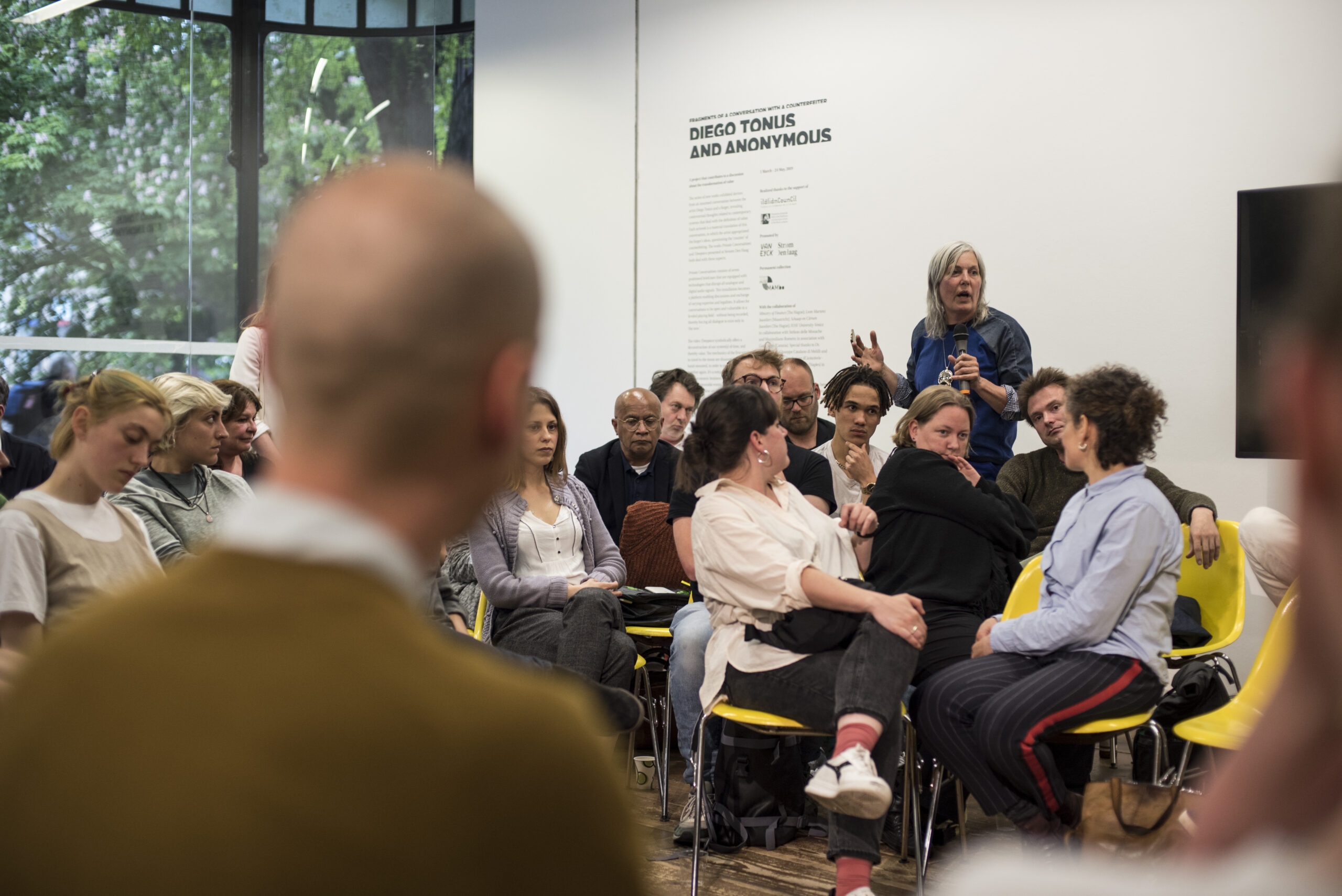
After more than thirty years of neoliberal policy, we know that marketization of the government and public services mostly benefits international market interests. Marketization and privatization only disadvantage citizens. Not only financially, but also in terms of services, civil rights, and democratic influence. And, as we have noticed recently, the privatization of public services affects our international security. Whether it’s Blackstone or Gazprom, we should keep these parties out of Dutch municipalities.
I wish for the financialization of social real estate to be brought to a halt and the use of studios to take central stage. To attain this, it is necessary on the one hand to go against this logic of market thinking and present a new definition of social real estate in opposition to that. Because the introduction of market thinking in the government and public services has not only reduced the amount of social real estate, but has also inflated the definition. One could say that municipal real estate no longer falls under the definition of social real estate because it is no longer accessible to social stakeholders.
Finding an answer to the question of who owns the studios and creating a new definition of social real estate concerns not only the function of studios but also the relationship between government and citizens, democratization, and Dutch geopolitics. Without making it more difficult than it is, I will begin with a cross-sectional look at studio buildings in the Netherlands. Of course, these are not isolated examples, but rather exemplify many studio buildings in other municipalities. Because this issue is at play from Amersfoort to Zoetermeer. With these examples, I hope to make the problems and solutions more concrete. With each example, I begin with the question: who owns the studios?
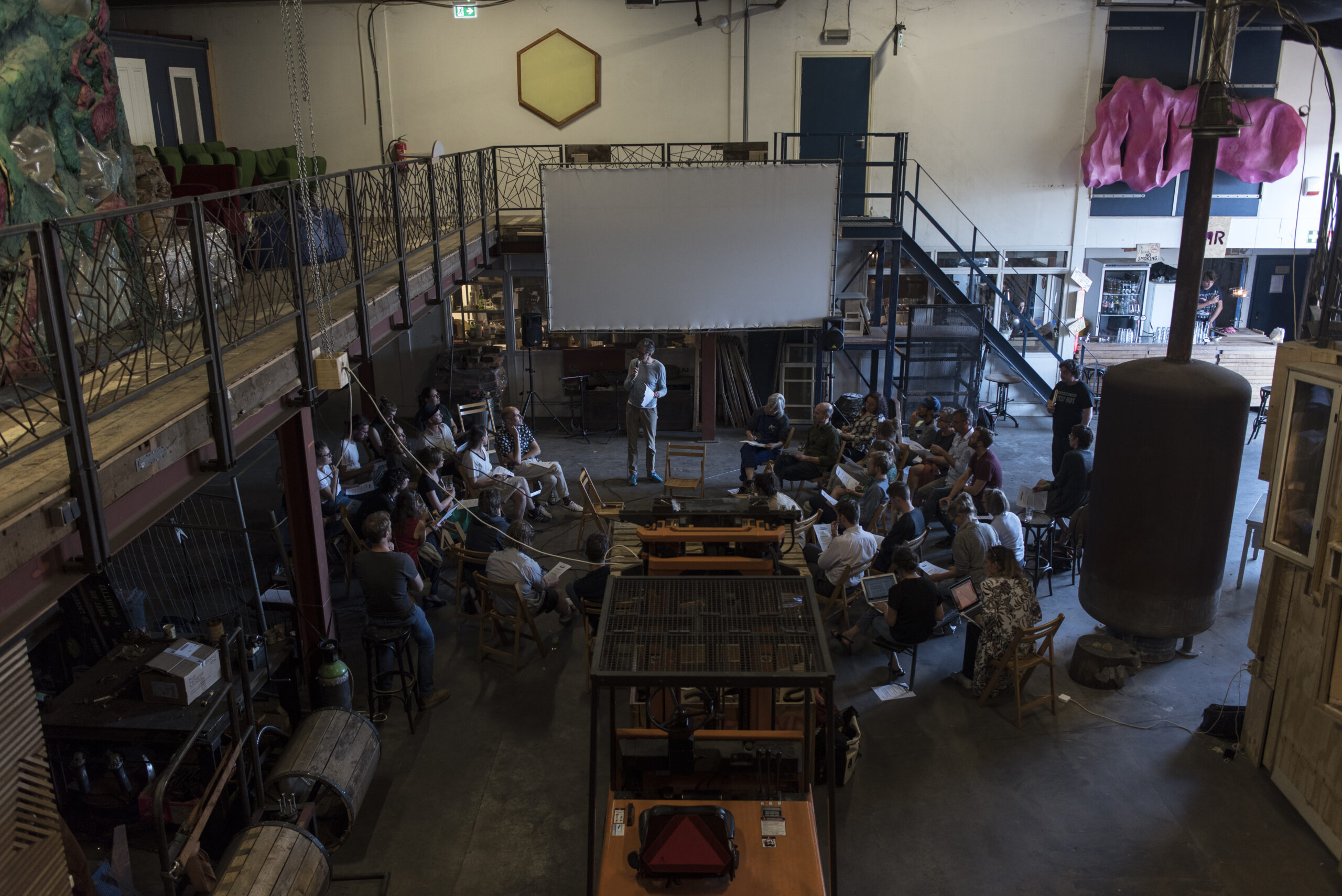
Real Estate Developer?
The first example is Broedplaats De Nijverheid (Nijverheid Artistic Incubator) in Utrecht. De Nijverheid describes itself as “a cultural free port in the Werkspoorkwartier in Utrecht with studios and creative workplaces for more than 50 autonomous artists, designers, and creative makers.” The owner of the building is an American pension fund that signed an eight-year rental contract with the Nijverheid Foundation in 2018. The Department of Cultural Affairs of the Utrecht Municipality gives a small yearly subsidy of €40,000 to De Nijverheid because in addition to studios and workspaces, it also has an exhibition program for artists from Utrecht. The portion of the rent that is paid with this subsidy goes directly to American pensioners. What appears to be a raw free port for creatives is actually a place where the municipality invests a cultural subsidy, a place where cultural and social value is created by artists, and a place where an international real estate investor siphons off this capital. It is uncertain what will happen when the rental contract comes to an end in 2026. Most likely, the artists will be able to stay until the real estate investor starts building expensive apartments there.
Housing Corporation?
The first housing complex with built-in studio spaces was opened in 1934 in the Zomerdijkstraat in Amsterdam. The project was the result of a social initiative for collective housing for artists. The municipality sold the complex to De Key in 1990 for 1 guilder with the condition that the function of the housing with built-in studio space would be safeguarded. In 2011, Lieven de Key broke this promise and put the first units up for sale as individual apartments. This sale foreshadowed the revolution in social real estate owned by housing corporations caused by the 2015 Housing Act. As of July 1st, 2015, housing corporations were forced to focus on their central responsibility: building and managing rental housing for people with lower incomes. They now had to administratively separate real estate that was not social rental housing or hand it off to a subsidiary, the so-called DAEB/non-DAEB separation. Now the building on the Zomerdijkstraat is a mix of privately owned apartments, commercial rentals, and social housing. The original goal has been watered down, and if artists hadn’t united to resist the sale, Lieven de Key would likely have already sold all the housing with built-in studios. In 2019, the tenants’ association Arcade won a lawsuit that overturned the transfer of social rental housing to the commercial subsidiary because the tenants had not given their permission.
Municipality?
Studio building M42 is one of the studio buildings in the Gouwstraat in Oud-Charlois in Rotterdam. In 2020, the municipality sent the artists a letter to them know that the buildings would be sold to the highest bidder, with the intention of eventually turning them into housing. The artists were interested in buying the buildings but couldn’t afford the market price. After they received the letter, the artists contacted the municipality and were promised that they could stay for another three years. That seems lenient on the part of the municipality, but it’s also a stay of execution. What now? The first half of the three-year respite has already transpired. One thing is for sure: what the municipality sold to the highest bidder will never again become social real estate.
Studio Organization?
In 2019, studio organization SLAK bought the former Volksuniversiteit (People’s University) at 15-19 Coehoornstraat from the municipality of Arnhem. The goal of SLAK studios is to facilitate the creative economy in the province of Gelderland with affordable living, working, and presentation spaces. For its contribution to the development of the art and cultural sector, SLAK receives structural subsidies from the municipalities of Arnhem, Nijmegen, and Apeldoorn. By purchasing the buildings and making them more sustainable, SLAK contributes to the preservation of the creative climate at this location around the corner from Arnhem Central Station. The buildings in the Coehoornstraat have been used by different creative entrepreneurs since 2013. The municipality gave the entrepreneurs five years to develop at this location. In 2018, the municipality announced its intention to preserve parts of Coehoorn Central for creative entrepreneurs, neighborhood residents, and the city. However, a sustainable solution was necessary for the management of the buildings. Part of this permanent solution is that SLAK became the owner of a building, and several other buildings were bought by artists. This way, both the function and the social real estate have been preserved.
Artists?
Broedplaats Maakhaven (Maakhaven Artistic Incubator) is located in an industrial building that was built in Laakhaven in the early 20th century by the Batavian Petroleum Corporation. The building has been owned by the municipality for decades, and since 2001 it has been rented out via the art institution Stroom The Hague to creative entrepreneurs, artists, designers, and craftspeople. The building houses 45 ateliers, studios, and workspaces, and also offers space for temporary projects and events. In 2017, Maakhaven signed a perpetual ground lease on the land and buildings with the municipality. This way, the municipality remains the owner on paper, but the management is done entirely by the foundation that is run by artists who are bound by the conditions in the ground lease. Because the artists did not have to purchase the property, the financial barrier was low, but they do have total control over the management for the long term. This gave the artists the possibility to sign a mortgage to remodel and improve the sustainability of the property. Without this security, the artists and financial partners would not have been able to invest in solar panels, among other things.
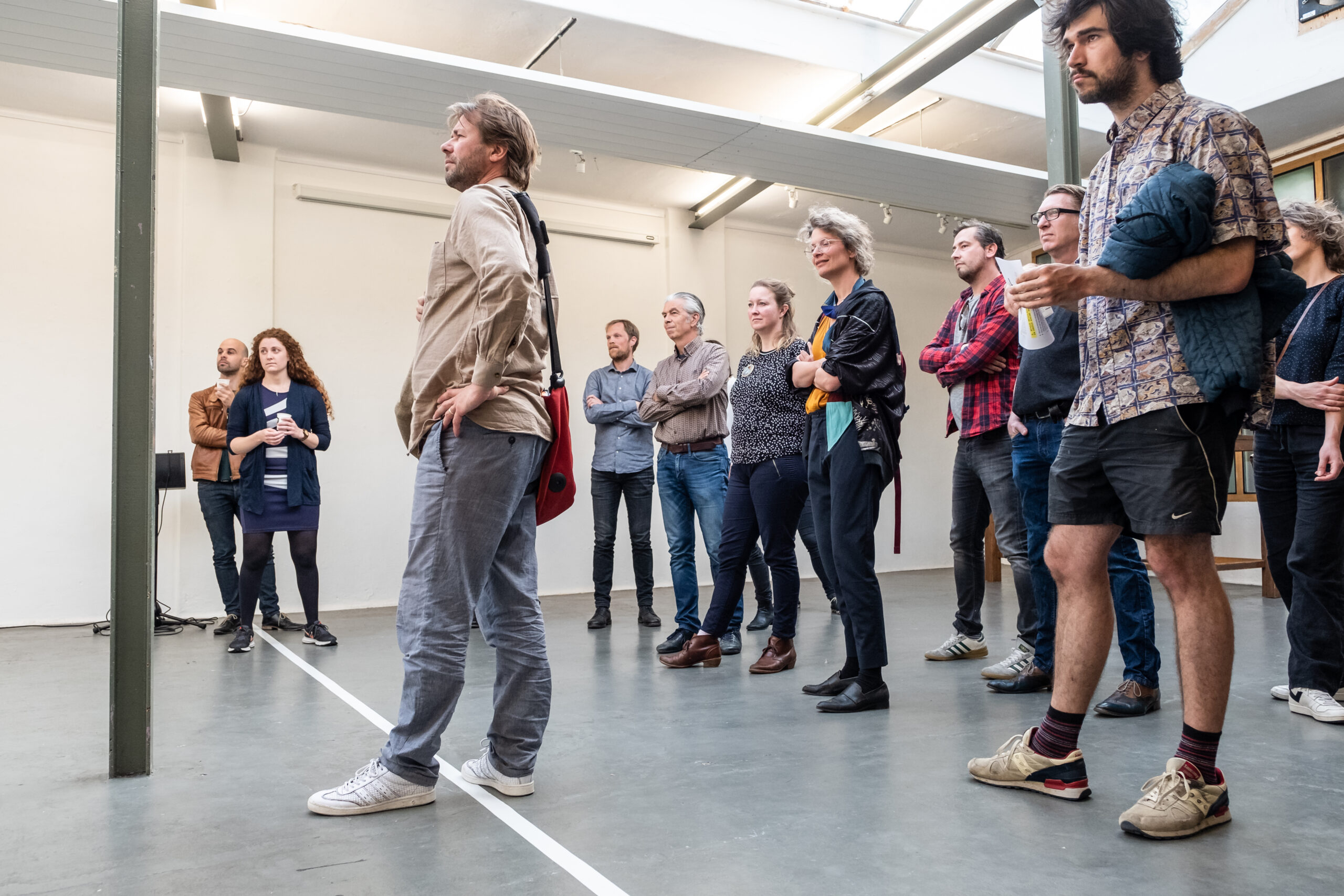
Temporary vs. Permanent
There are also artists in other cities who are in a game of musical chairs orchestrated by the municipality, just like M42 in Rotterdam. In Eindhoven for instance, where the monumental property De Zevensprong has been put up for sale by the municipality because according to the alderman, the municipality’s “reserve funds” are getting low. The artists have rented their studios there since 2014, after the school building lost its original function. Last year, the artists were told that the building would not be sold. But a new city government means new policy. And in other cities too, artists have started cooperatives to secure affordable housing and workspaces. For example, the Hof van Cartesius in Utrecht, where since 2018 a group of creatives have built several workspaces with their own hands using recycled materials. Last year, artists’ cooperative Square 28 opened their self-built studio building in the harbor district of Amsterdam. The studio organization SAT bought the studio building NS16 in 2018 with the support of the municipality of Tilburg. And in 2017, the Stichting Kunstenaarshuizen Amsterdam (Artists’ Houses Foundation) bought the Ramses Shaffy House, a good example of how a studio organization can develop and manage an intergenerational property with living and working space for artists young and old.
These examples present a picture that also emerges from the data. Studios owned by real estate developers are always of a temporary nature, as the building will be sold. And studios that are managed by housing corporations are in general also temporary because housing corporations’ social functions are under pressure. Housing with built-in studios is left out of this picture, but in their case too, corporations more and more often abandon that function after five or ten years. In the case of municipalities, studios are temporary to semi-permanent, meaning that their function as such is never fully secured. In many municipalities, artists are assigned studios under the vacancy policy. Properties that offer more security with a longer lease are nevertheless not guaranteed a future. As soon as there is a gap in the budget during a legislative session, studios are one of the first items to be sold off. For studio organizations, about half are temporary, which refers to properties with a lease, and half are permanent, which are privately owned. Properties where an artists’ association is the owner and manager are more or less permanently secured.
Given the continuing demand for studios and the current housing shortage, investing in permanent studios is the most logical option. In the coming years, there will be much densifying, redeveloping, and building in the Netherlands. Studios can be assigned a place in these plans for area development. Municipalities: include percentages in zoning plans, assign plots, issue a call for tenders specifically for cooperatives, and give out land rights to this end. These are policy instruments with which municipalities can invest in permanent studios that are owned or managed by studio organizations or artists’ associations. Renovation or construction of buildings could be done in a financially attractive way with national and/or municipal revolving funds, for example through the Stimuleringsfonds Volkshuisvesting (People’s Housing Stimulation Fund), so that studio organizations or artists’ associations can realize living and working spaces. These kinds of policy instruments result in a future-proof and profitable studio policy, in contrast to the investments in temporary studios of recent years.
The consequences of endless subsidies for temporary solutions are clearest in Amsterdam. As part of the artistic incubator policy, the government has invested €55 million in studios since 2000. Fifty-five million euros! That’s €2.5 million per year. This has resulted in about 750 individual studios and 69 artistic incubators with 1,500 workspaces. That may sound like a lot, but 43 artistic incubators will disappear in the coming years. Then new investments will likely be necessary again. But as market prices have become the standard for social real estate, the subsidies will also have to increase to maintain the same numbers. The artistic incubator organizations have already asked for €4 million per year instead of the yearly €2.5 million from the municipal government to maintain the number of studios. In short, temporary management of a vacant property is not financially sustainable and future-proof studio policy.
Moreover, studio organizations and artists’ associations who own studio buildings will be better able to keep the rents affordable. Since the Market and Government Act, the cost-effective rent that municipalities have to charge has made the rents for municipal studios high. Since it went into effect in 2017, artists in Amsterdam were confronted with rent increases of up to 40%. In addition, in the summer of 2022, the municipality felt it necessary to raise rent by 11% due to indexation. While the yearly indexation was limited in recent years to an average of 2.3%. In short, the affordability of the studios in municipal real estate is under severe pressure; in five years’ time, the cost has increased by more than 50%. And this while in the case of buildings owned by artists, rent increases haven’t been nearly as great.
Social Balance
With all the above in mind, I come to the conclusion that there are only a limited number of types of ownership and management of real estate in which the real estate can be seen as social. Truly social real estate is that which above all serves a social purpose, and not the capital of the real estate investor, the municipal budget, or corporations’ construction budgets. That also applies to studios. In short, the ownership and management of studio buildings should be in the hands of artists’ associations and studio organizations. In that case, it would be essential that there be a guarantee that the building will not be put up for sale on the market. In my view, this combination of ownership and guarantee is the key. It is this combination that both removes the real estate from the market and transfers control to the users, so the function of the real estate is prioritized. In all other forms, the financial value of the building would eventually undermine this function.
At first glance, this new definition of social real estate looks like a shift away from the municipality and the housing corporations, like they are no longer necessary. But it’s more nuanced than that. Municipalities and corporations can play a facilitating role in the creation of these partially new forms that are supported by social interests. These forms connect with the growing cooperative movement in the Netherlands. Just as energy cooperatives in the Netherlands have been made self-sufficient and independent with the support of the national government, provincial government, and municipalities, the same can be done with studio cooperatives. These cooperatives offer an important new social balance: a balance that removes the opposition between producer and user. In the case of housing corporations, occupants are both renters and owners, which offers a balance between the pros and cons of renting and buying.
This balance is interesting and more important than participants in cooperatives, be they housing, food, or energy co-ops. It is this citizen-driven balance through which the social can be renewed – after years of dismantling of the public sphere by neoliberal policy. In addition, the balance of energy cooperatives offers a ready-made answer to the current geopolitical tensions caused by the energy crisis; by becoming self-sufficient, we can increase our independence from parties like Gazprom and can work our way towards fossil fuel-free energy. Let’s free Dutch municipalities from killer contracts with parties like Blackstone and build towards a social balance with studio buildings.
Forms of Ownerships and Management
To make this perspective a bit more concrete, I would like to discuss the possible forms of ownership and management. In general, there are two types: the artists’ association or studio organization can be the manager and/or owner. Preference for one or the other is partly personal and partly ideological. It is a choice between an association or a foundation, active solidarity among equals or passive solidarity by way of an intermediary, autonomy of artists or participation by renters, an intergenerational community or an institutional organization. Both forms of ownership and management need the support of the municipality and/or housing corporation in order to be realized. When an artists’ organization wants to realize or manage a studio building, they will need support from the municipality or housing corporation for their own organization, for the land rights, to purchase the building, financing, environmental contracts, etc. A studio organization will have to take care of the same things, but in most cases, it will have a way in because of the subsidy relationship with the municipality and will have staff to organize this. In any case, there needs to be a point of contact that can support artists’ associations and studio organizations and can mediate between them and all teams of civil servants in cultural affairs, real estate, and land issues, subsidies, and housing cooperatives involved. The most important thing is that both forms of ownership and management offer the possibility to place social real estate outside the market forever, which results in, among other things, long-term security, affordable rents, financial sustainability, and social gains.
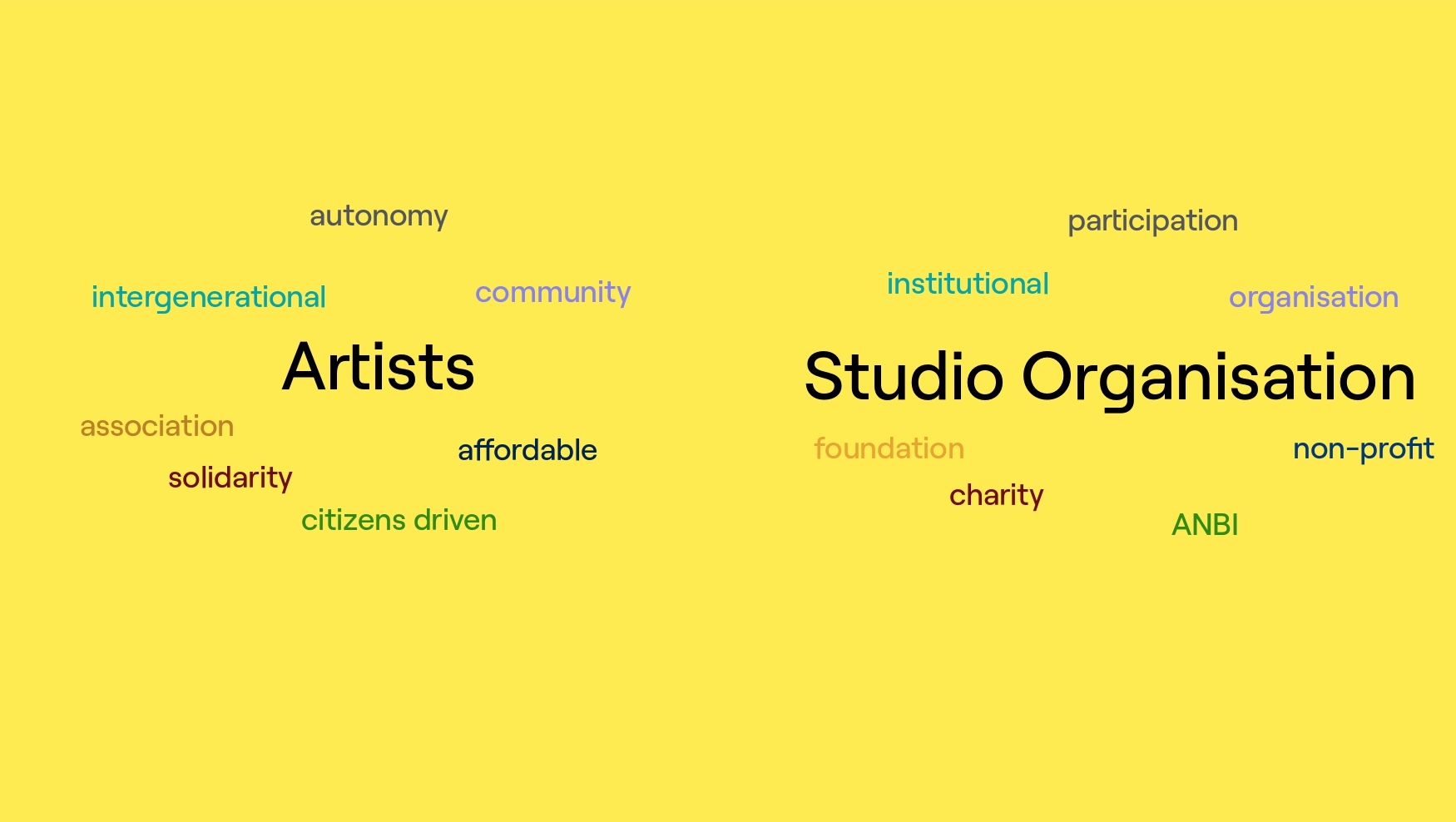
Too Late?
It’s never too late. The movement against the financialization of social real estate has already been set in motion. For example, all across the Netherlands, housing cooperatives are being founded with the purpose of keeping housing out of the clutches of the market permanently. At the moment, there are more than two hundred active projects like this spread across the country. In this way, social real estate is being reinvented. It is still on a relatively small scale, but is growing rapidly at the same time. It also applies to studios: they can also be organized in such a way as to be permanently kept off the market by artists or studio organizations. Luckily, more and more people realize that ownership of social real estate by artists’ associations or studio organizations is the best way to protect its function. Although it may seem difficult, it is the best way forward.
This text was translated from Dutch by Felix van der Vorst and Hannah Vernier.
A previous version of this text was presented by the author as the key-note lecture of the Symposium Atelierbeleid Groningen on 15 September 2022.
Joram Kraaijeveld is a producer, curator, teacher, and writer. He aims to improve the position of the artist and acknowledgment of the value of the arts to society. He works to support active forms of solidarity within and beyond the arts. He was involved in the development of the Labor Market Agenda for the Cultural and Creative Sector 2021-2024 (Arbeidsmarktagenda voor de Culturele en Creatieve Sector 2021-2024), the Artist Fee Guideline, and the Fair Practice Code. On behalf of Platform BK and together with Bart Stuart, he authored the report 'Geen Stad Zonder Kunst', a comparative study of governance models for artist studio space in The Netherlands. Joram teaches art theory at the Gerrit Rietveld Academy in Amsterdam, where he is also the chairperson of the Editorial Board for Incercurricular Programs. He has worked as a curator for SMBA, Van Abbemuseum, De Brakke Grond & Museum Dr. Guislain, Schloss Ringenberg, Metropolis M, and Stedelijk Museum Amsterdam, among other places. Articles by his hand have been published by Metropolis M, Boekman, and Kunstlicht. He is the chairperson of Platform BK, committee member of CAWA, and member of the housing coop Het Nieuwe Bajesdorp.